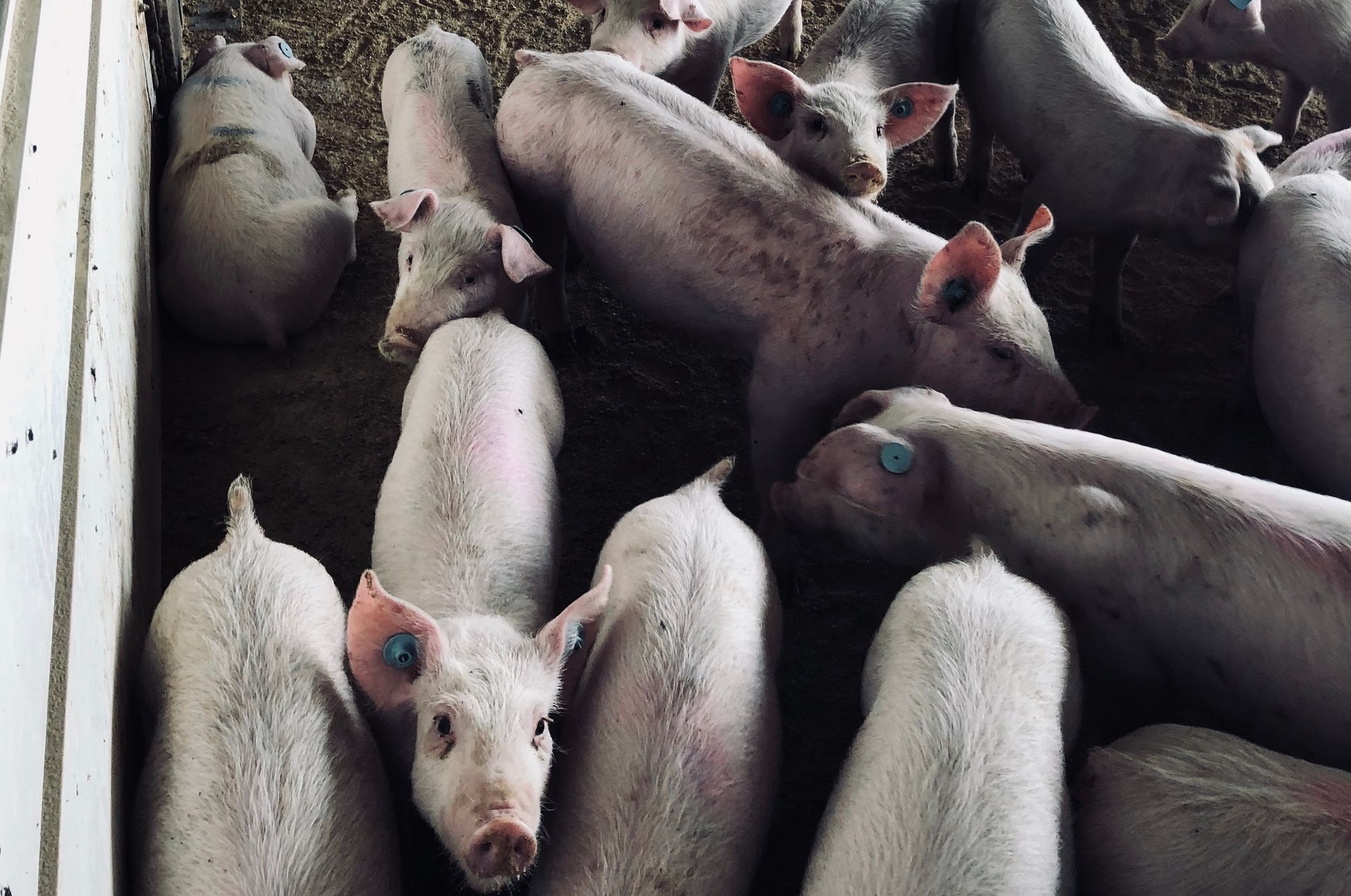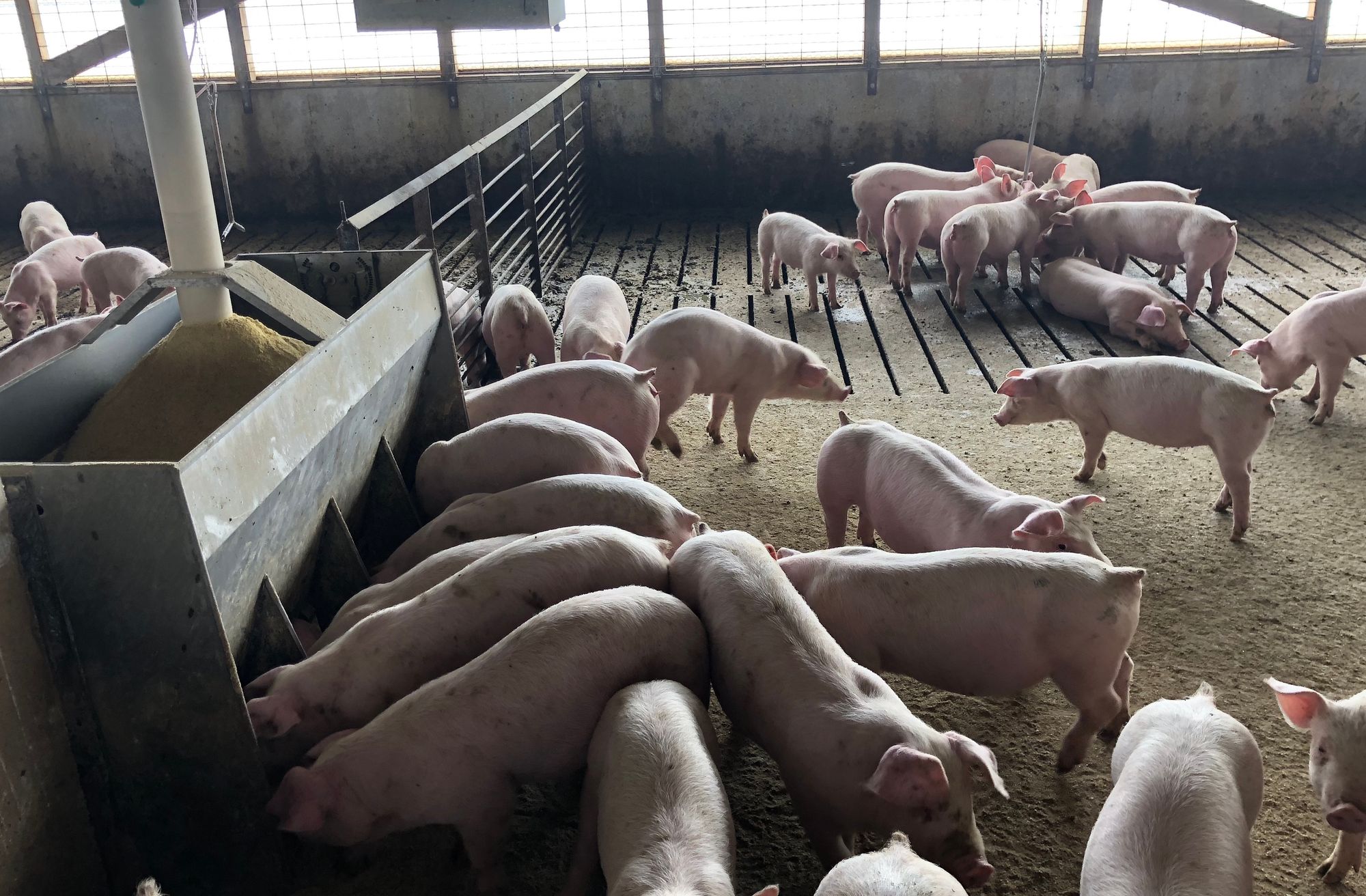The closure of major pork processing plants across the U.S., including the massive Smithfield Foods plant in Sioux Falls, has state officials and pork producers in South Dakota planning for the worst — the potential euthanization of thousands of hogs that cannot be sold.
Since the COVID-19 pandemic began, American pork processing capacity has declined as much as 25% due to closures and slowdowns at processing plants around the country.
As a result, thousands of pigs at all stages of life are backing up in barns around South Dakota as farmers race to find somewhere to take finished hogs for slaughtering and packaging. Some producers say they are selling hogs at a loss of around $40 per animal in an effort to make space in their barns and avoid euthanization. Such losses, they say, are not sustainable if the pandemic drags on and plants that have become COVID-19 hot spots are not opened soon.
“The absolute worst case would be that we would have to work with our state veterinarians and our local vets and follow the guidelines set forth by them and in the national pork board on humanely euthanizing these hogs and having to dispose of them,” said Shane Odegaard, a pork producer who lives near Lake Preston. “It’s something nobody wants to do. But, heaven forbid, if there’s absolutely no place to go with these hogs, you just can’t keep them around forever from the standpoint of animal welfare.”
Between plant closures and slowdowns around the country, COVID-19 has cut pork processing capacity by about a quarter of its pre-pandemic capacity, said Glenn Muller, executive director of the South Dakota Pork Producers’ Council.
The loss of processing capacity translates to about 100,000 fewer hogs being processed in the country every day, Odegaard said. Statistics show it won’t take long for a massive backlog of hogs to reach a critical stage.

South Dakota recorded a crop of 1.75 million finished hogs in the month of March alone, according to the U.S. Department of Agriculture. The state’s hog producers also expected 140,000 sows to give birth to litters of 10 or more piglets from March to May, the USDA reported. South Dakota is ranked 11th out of the 50 states in terms of annual hog production, according to the national Pork Checkoff.
Pork production is a step-by-step, five or six month process that is difficult and costly to interrupt. When hogs are finished, or fully grown, they weigh about 280 pounds and must be moved out of barns for sale and processing to make room for the arrival of younger pigs and because it is expensive and time-consuming to continue feeding them and handling their wastes. It is also inhumane to keep too many pigs in too small a space.
Raising pigs has become a precision industry with very little idle space in barns and a constant stream of new hogs being born, said state veterinarian Dustin Oedekoven, who would be responsible for overseeing mass euthanizations should they be necessary. Processing plant closures will affect the pork production chain at every level, meaning producers will have to make increasingly difficult decisions — including whether to euthanize pigs — as the pork processing slowdown drags on.
“It’s an emotional, gut-wrenching thought to have, but it’s the responsible thought to have if the welfare of the animals is going to suffer anywhere along that chain,” Oedekoven said. “And that may be the sow that needs room to gestate, it might be a piglet that needs room to grow, it could be the finished hog that’s just flat out of space to grow anymore.”
If the processing slowdown doesn’t reverse course soon, many producers will start having to euthanize market-weight hogs between May 1 and May 15, Oedekoven said. He noted that, so far, no producer has reported euthanizing large numbers of hogs.
But the situation has only gotten worse over the past week. The Sioux Falls Smithfield plant was processing around 19,000 hogs per day before shutting down indefinitely on April 12. That closure was bad enough, but within days Smithfield announced the closure of two other plants in different states. Then, on April 20, a JBS pork processing plant in Worthington, Minn. that was processing 20,000 hogs per day also shut down due to COVID-19 infections.
News of the Worthington plant closure was just as devastating as the Sioux Falls Smithfield closure, Odegaard said. He has historically sold up to 15,000 hogs per year, mostly to the Sioux Falls plant. While he has had some recent success finding processors with capacity to take his hogs — he has a load scheduled to be trucked to a processor in Nebraska at a $40 per-head loss — Odegaard said he still has 400 to 500 finished hogs backlogged in his barns. And there are more pigs on the way.

“The absolute worst case would be ... humanely euthanizing these hogs and having to dispose of them. It’s something nobody wants to do. But, heaven forbid, if there's absolutely no place to go with these hogs, you just can't keep them around forever from the standpoint of animal welfare.” -- Shane Odegaard, Lake Preston pork producer
“For every pig that goes to harvest, there’s one being born. The infrastructure is not there to be able to just hold on to these pigs,” Odegaard said. “For one thing, we don’t have the building space we need to keep these pigs around, and second you just can’t keep feeding them with the hopes of something happening here real soon.”
The pressure on producers to offload finished animals has provided some unexpected work for small meat processing plants, such as Western Buffalo Company in Rapid City.
The shop with 22 employees typically processes about 70 buffalo a week to provide meat for restaurants, a market that has tanked during the pandemic, company owner Bruce Anderson said.
Anderson said he is taking several calls a day and has welcomed the business from people who have purchased whole hogs at a major discount from producers that are desperate to sell finished animals at any price.
“They’re buying from producers who are saying, ‘I can get a pig to you for a 100 dollar bill, but you’ve got to find a place to cut it,’”Anderson said. “If they can buy a pig for that little, less than half the price as normal, they can fill up their freezer with meat.”
Given the sudden demand for hog processing, Anderson has shifted his system to handle pigs in an effort to serve the buyers but also to help sustain the market for hog farmers.
“We’ll help these guys get some cash out of their hogs so they can stay in business any way they can,” Anderson said. “It’s a difficult situation for producers, but it’s the best they can do given the current conditions.”
Odegaard has sold some of his pigs directly to consumers and taken them to local meat lockers for processing. Direct sales do provide a small injection of cash but, more importantly, it’s a way to reduce his backlog of animals. However, transporting hogs to multiple processors opens the door to exposing his remaining hogs to disease, Odegaard said.
Local meat processors also can’t sell meat across state lines, so their ability is limited to fill gaps left by large processor shutdowns, such as the Sioux Falls Smithfield closure. The Animal Industry Board regulates between 60 and 80 such lockers, Odekoven said. But a 1968 federal law forbids state-inspected meat processors from selling their products in other states, despite meeting the same inspection standards as large processors.
“They do good work. We’d like to see their services be able to be expanded,” Odekoven said. “The Renner locker, for example, can produce a product that can be packaged and sold in Lemmon or Rapid City but could not go over to Rock Rapids, Iowa just across the border. It just makes no sense.”

South Dakota U.S. Senator Mike Rounds in September 2019 introduced legislation that would allow some state-inspected meat processors to sell products across state lines. Still, local meat lockers probably would not be able to make up much more than one or two percent of what processors such as Smithfield can do, Odekoven said.
In an effort to give farmers more options to handle backlogged pigs, South Dakota Gov. Kristi Noem issued an executive order on April 20 that would allow hog producers to keep more pigs in their barns than their Concentrated Animal Feeding Operation permits currently allow. The measure would only be effective during the COVID-19 emergency.
The South Dakota State University Extension Service has also issued guidance on how to safely and humanely reduce the amount of food given to hogs in order to slow their growth.
While such measures will help stave off euthanasia for a few weeks, Oedekoven said, the only way to truly solve the problem is to reopen processing plants.
“The best way to dispose of those hogs is through the normal slaughter channels out there,” Oedekoven said. “That’s what they were raised for, that’s what the intention was. We’ve just got to get our slaughter capacity back up and going again, and that’s not an easy thing to do.”
— South Dakota News Watch reporter Bart Pfankuch contributed to this report.



